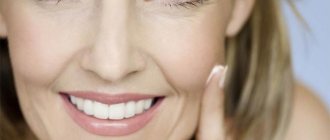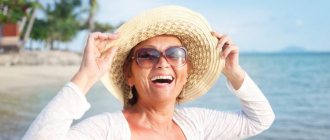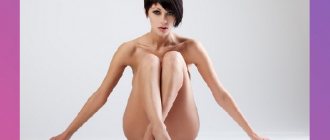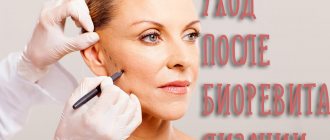Today we are looking at chemical facial peeling, as well as the features of this procedure. After all, beauty salons, especially in the autumn-winter period, very actively promote this procedure. Yes, she is successful. Yes, the results are visible. But everything can’t be so perfect when chemical compounds are used for manipulation. We must understand that not all of them are absolutely harmless, natural and do not cause side effects.
Unfortunately, a cosmetologist in a salon is unlikely to tell you about all the pitfalls. To be fair, let’s say that with a reasonable approach and taking into account all possible nuances, complications arise extremely rarely.
So, dear ladies, let’s begin to consider all the pros and cons of chemical facial peeling.
Pros and cons of chemical peeling by type of procedure
First of all, let’s remember what chemical peeling is in principle. This is a procedure for cleansing the epidermis using chemical compounds that provoke controlled damage to the skin, resulting in an inflammatory reaction. In other words, a targeted burn of dermal tissue. The purpose of this effect is to remove dead layers.
If you delve into physiology (school curriculum), any damage causes a response from the body aimed at recovery. Regeneration processes are launched, protein compounds are more actively produced, and metabolic reactions occur faster. And all in order to “bring back to normal” the damaged area.
Impressive, isn't it?! Now let's look at chemical peeling for the face: the pros and cons of manipulation. And to be precise, it is incorrect to talk about such a procedure in a single number. There are types of peeling that have different effects on the epidermis. These are superficial, medium and deep cleansing. Consequently, the effectiveness and harm of such procedures also varies somewhat.
Among the problems that chemical peeling can solve, cosmetologists name the following:
- Problem skin. Moreover, both oily and prone to dryness and flaking;
- Thickening of the epidermis, tuberosity - hyperkeratosis;
- Pimples, blackheads, acne and post-acne, comedones (blackheads), millennials (milliums);
- Loss of elasticity, appearance of wrinkles, sagging skin;
- Signs of photo and chronoaging;
- Hyperpigmentation, including age-related, freckles;
- The presence of scars, cicatrices;
- Uneven tone, dull complexion.
All these problematic issues can arise at any age. Ideally, our body should independently and in a timely manner get rid of keratinized cells of epithelial tissues. However, due to objective and subjective reasons, these processes are disrupted. And chemical peeling is used as an “auxiliary”, accelerating and stimulating.
However, there are contraindications for any type of procedure, regardless of the depth of impact on the epidermis. These include:
- Wounds, scratches, cracks, purulent pimples - in a word, damage to the integrity of the skin at the site of application of the working composition;
- Excessively sensitive skin;
- A history of allergies;
- Inflammatory processes on the face;
- Dermatological diseases;
- Infectious and other diseases accompanied by increased body temperature;
- The period of exacerbation of chronic diseases of any location and origin;
- Oncology of any location and stage of progression;
- Postoperative period;
- Endocrine pathologies;
- Tendency to form keloids and scars;
- Individual intolerance to any of the components of the peeling preparation;
- Use of certain medications.
Now it would be advisable to consider each type of peeling in the context of its pros and cons.
Surface
Superficial peeling is the simplest, most gentle procedure. The impact is made at the level of the stratum corneum of the epidermis. This manipulation can be carried out by a cosmetologist in a salon. Or you can do it yourself, using store-bought or home-prepared formulations.
Among the pronounced advantages of such manipulation we note:
- Safety (relative!);
- Painless;
- Minimum side effects and complications;
- Short recovery period.
Well, the “fly in the ointment” is the cons:
- Effective only for minor defects and age-related changes in the skin;
- A noticeable result after completing a course of procedures (from 5 to 10 sessions).
Important! Despite the fact that superficial peeling is considered a safe method for cleansing the skin, all precautions must be taken, contraindications must be taken into account, and post-care rules must be followed.
Cosmetologists state that many women seek help to eliminate complications precisely after superficial peelings performed at home. Clients do not take into account their individual characteristics, exceed the exposure time of the working composition, and use inadequate chemicals.
Median
Medium chemical peeling provides for deeper penetration of the components of the product. All layers of the epidermis and the upper layer of dermal tissue are affected (and these are, for a minute, living cells). The applied composition helps exfoliate dead cells, eliminate deeper problems, and has a lifting effect.
Pros of the procedure:
- Efficiency in the presence of inflammatory processes;
- Elimination of pimples, blackheads, acne and other encrusted defects;
- Combating moderate age-related changes;
- Minimizing wrinkles, removing scars, age spots;
- Rejuvenating effect due to stimulation of the production of neocollagen and other protein compounds;
- Increased turgor, improved skin elasticity;
- Alignment of color, tone, microrelief of the face.
The disadvantages include:
- Unavoidable side effects;
- Possibility of complications;
- Soreness;
- Long recovery period;
- The need for a course of procedures (from 4 to 6 sessions) at weekly intervals.
Some extreme ladies manipulate salon preparations on their own. Please note - this is very dangerous, especially if you are doing this for the first time. The specialist sees the skin reaction and can neutralize the composition in time, preventing severe burns. It is very difficult to control such a process yourself.
Deep
Deep peeling must be used depending on strict indications. The procedure is equated to plastic surgery; the manipulation is no longer carried out by cosmetologists, but by surgeons. Tissue removal occurs, involving the deep layers of the dermis in the process.
Pros:
- Effective elimination of even pronounced signs of skin aging;
- Correction of pronounced defects of the epidermis - strong pigmentation, some dermatological problems, deep scars and scars.
Due to the complex intervention and the depth of impact, there are quite a few disadvantages:
- The need for general anesthesia;
- Severe pain after the procedure;
- High risk of complications;
- The inevitability of a number of pronounced side effects;
- A long recovery period, requiring specific care with the use of medications and special cosmetics;
- The need for UV protection for at least three months after complete recovery.
Such deep cleansing of the skin is carried out only under general anesthesia, in a hospital setting. During the recovery period, bed rest is indicated for a week (also in the clinic, not at home). Only after this is outpatient care and rehabilitation possible under the strict supervision of a doctor.
Effect after facial peeling: is it a thrill or is it better not worth it?
Most women are worried about the effect after the procedure. The concern is caused by myths that severe acne can occur on the skin after peeling. Or - cosmetologists will overdo it and there will be a burn or damage on the face. But these are just myths, and cosmetology clinics in 90% of cases hire only experienced specialists. Therefore, if you are planning to improve the quality of your skin, feel free to lie down and trust your doctor.
Peeling solves problems:
- Evens out skin tone.
- Improves the quality and texture of the epidermis. Due to saturation with blood, the skin becomes velvety, soft and elastic.
- Wide pores become narrower and cleared of blackheads.
- Systematic procedures relieve acne and rashes.
- Pigment spots are reduced significantly or disappear completely.
- Scars and scars are tightened.
- Wrinkles are smoothed out.
- Noticeable blood vessels on the face lighten and blend with the skin tone.
- Removes fat and dries.
- Regenerates and rejuvenates local parts of the body and face.
Advice from cosmetologists:
“Try to do the procedure at least a month before traveling to warm countries. After peeling of any kind, do not go to the solarium. Salons with poor service and non-professionals encourage their clients to do the procedure before relaxing. They argue that the tan will be better. But no. Do not make this mistake, as you can seriously harm your skin and get a deep burn. If you use the cleaning method while on vacation, take care of your skin and use sunscreen. Try not to appear in the sun for at least a day.”
What will cosmetologists say?
Cosmetologists who perform chemical peeling largely balance the pros and cons of the procedure. However, experts note that everything is good in moderation. In other words, procedures should not be abused under any circumstances.
Recommended:
- Peels should be carried out during the period of least solar activity (autumn-winter);
- Consider indications for procedures and all possible contraindications;
- Superficial cleansing – course. Perhaps several times a year;
- Medium – also in a course, once a year;
- Deep - according to strict indications, once every few years.
Use only adequate products for procedures; if possible, contact specialists even for superficial peeling. If you want to do the procedures yourself, be sure to consult with a cosmetologist to find out all the nuances.
Remember! Chemical peeling of any depth of exposure is an injury to the epidermis. He is recovering, no doubt. But alas, the body’s reserves are not limitless. Frequently performing such procedures exhausts resources. There may come a time when recovery is simply impossible for the simple reason that your body has used up its genetically endowed regenerative reserve.
HORMONAL SURGELS
Another factor that allows one to indiscriminately attribute harm to facial peels is, of course, pregnancy and similar manifestations of hormonal storms. This is why expectant mothers are not among the favorite patients of cosmetologists. Even when the risk to the fetus is completely excluded, the reaction of the female body against the background of the restructuring of all major life systems is much more difficult to predict.
This is also associated with restrictions on exfoliation during the first phase of the menstrual cycle. It is difficult to accurately predict how the endocrine system will behave, plus a decrease in the pain threshold - all this forces dermatologists to insist on postponing procedures to a safer time. That is, if the scheduled peeling session falls at the beginning of your next period, it is better to postpone it for at least 3 days, so that you don’t have to guess what to expect as a result: harm or benefit.
We recommend: PEELING AND SCRUB: what's the difference? 7 harmful misconceptions
Summarize
Modern cosmetology offers a lot of different procedures designed to solve appearance problems. Chemical peeling takes its place of honor on this list. This is an effective manipulation that helps women correct congenital and acquired defects.
There are pros and cons. But if you know about all the pitfalls, adhere to the principle of the “golden ratio”, listen to the opinions of experts and do not engage in unjustified amateur activities - go ahead! After all, in the struggle for beauty and youth, all means are good. The main thing is not to regret your excessive passion for self-improvement.
IGNORING CONTRAINDICATIONS
The first and most obvious contraindication is usually any damage to the integrity of the epidermis. For example, a freshly popped pimple with a purulent core cannot be treated with chemical peeling: a burn will remain in this place, which will take much longer to heal.
Few people think that banal eyebrow hair removal or a light scratch from a beloved kitten’s paw during peeling brings harm rather than benefit, although it is, of course, strange to blame the procedure itself in this case.
In addition, diseases that affect blood clotting, nervous exhaustion and immune disorders can add a fly in the ointment during the session itself and subsequent rehabilitation. The healing of the skin after exfoliation will be much longer in such cases. This is why any peel should begin with allergy tests and thoughtful (rather than formal) research into health restrictions.
We recommend: PEELING AND DEMODECOSIS: getting rid of unnecessary roommates








